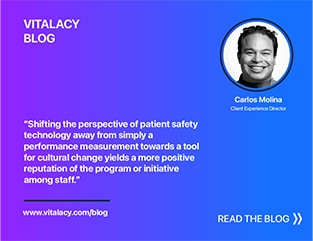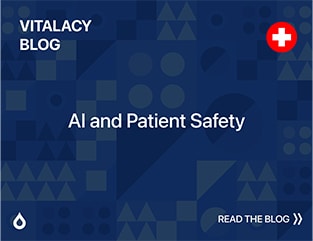
Before getting into specifics, put the issue of patient safety in perspective: What do you think would happen if 100,000 people died every year in airplane crashes? Doubtless, the aviation industry would descend into a critical state of emergency, devoting all available resources to address and maintain consumer safety. Yet, this is about how many people die every year due to healthcare-associated infections, a highly preventable cause of morbidity and mortality.
Beyond HAIs, annual deaths due to medical errors in general have been estimated at 200,000 in the United States alone, with most hospital-acquired conditions considered preventable. In contrast, annual commercial aviation-related deaths generally number in the hundreds or less, worldwide, with zero fatalities on commercial jet airlines in 2017. There’s a reason for this: the airline industry, like many other consumer-directed industries, has a zero-tolerance policy for errors, and has been using all tools at its disposal to come closer and closer to this goal every year.
If the airline industry, with all its technological hurdles, can adopt a zero-tolerance policy towards errors, why can’t the healthcare industry?
The truth is, it can improve patient safety in hospitals. The CDC has noted progress in HAIs over recent years, but the industry can do so much better. The goal must be to transform HAIs and other hospital-associated conditions into rare and unacceptable events. The knowledge base is there, and the tools are there. But before an effective patient safety program can be implemented, consider what such a program must entail.
Here are six qualities every effective patient safety program should include.
1. Objective, Continuous, and Comprehensive Data Gathering
In order to solve a problem, you must first understand the problem, and for that you need data. In the case of HAIs, where are they occurring, and under what conditions? What measures are helping? What is the institutional compliance rate with hand hygiene policies? Are policies and directives being ignored? In addition, HAIs are not the only patient safety concern. While hand hygiene and other infection prevention measures are major factors in preventable morbidity, other factors play large roles in patient safety, as well. These include nurse-to-patient ratios, physician and nurse fatigue and burnout, antibiotic resistance, and problems related to poor interoperability of electronic health records. To decrease morbidity due to medical errors, ongoing, regular data is needed to identify which patient safety factors are the “problem areas” in a specific hospital or medical setting.
2. Real Time Feedback and Operationally Pertinent Data
Periodic feedback (for example, telling MDs at a monthly meeting that hand hygiene is inadequate in their department) is a relatively ineffective approach to behavior modification. Reminders like stickers and buttons can be more helpful, but are still a minimally effective solution to a very important problem. A much more effective approach is immediate feedback, for example, alerting healthcare professionals that they are leaving a patient room without washing their hands. This can be done to a certain extent through traditional means, such as empowering nurses to tell doctors to wash their hands. But there are social and practical limitations to relying on direct observation approaches like this. A better solution is technology, such as wearable sensors that can give immediate feedback and operationally competent data, in real time, throughout each healthcare provider’s shift.
3. 100 Percent Work-Culture Commitment to Safety
If you look at the chip manufacturing, industrial food, or airline industries, you will see an absolute commitment to zero-error safety practices. Violation of best practices is not tolerated. In contrast, in many hospitals, the handwashing rate hovers around 50 percent or lower, with MDs showing the poorest rates. Patient safety is best accomplished as a team practice, with all members being held 100 percent responsible for best practices. To increase patient safety, healthcare facilities need to reinforce a patient safety culture that is fully and unmitigatedly committed to the goal of zero-error safety practices. Without a constant, useable stream of pertinent information and real time notifications about hand hygiene compliance, this is a near-impossible task to undertake.
4. Cost Effective
While patient safety for its own sake is the #1 goal of healthcare providers, economic realities cannot be ignored; hospitals need to maintain financial solvency, so cost effectiveness must also be a high priority. The costs of not addressing patient safety issues include penalties, diagnosis related group payment decreases, excess patient care costs, legal liability exposure, and excess bed days. These costs dwarf any savings from doing nothing, so that leaves two major patient safety program structures: direct observation and technological solutions.
While there are startup costs to implementing new technology such as wearable sensors, the costs are much lower than that of hiring personnel to implement a direct observation program. In addition, direct observation is not only subjective but will always be hampered by the fact that observations are limited to personnel availability. Overall, direct observation is expensive, random and limited in its effectiveness. While there are up-front costs to adopting an electronic patient safety monitoring platform, the much-higher effectiveness of such a platform can save money in the longer term through prevention of error-related hospital costs, including lawsuits or fines.
5. User Friendly
Patient safety is of paramount importance, but safety strategies shouldn’t ignore the human beings who work in hospitals (often human beings who are already working very hard to carry out weighty responsibilities). Implementation of patient safety solutions therefore should be minimally disruptive and needs to place a minimal burden on hospital workers, in terms of training time and daily operation. Breakdowns in technological systems are very disruptive, so reliability and durability are key. Any system adopted should also be easy to use. When planning a patient safety program, it is crucial to adopt a system that has a proven track record of in situ effectiveness and user-friendliness, as well as ongoing, top-rate customer service and support.
6. Data and Systems Analysis
It is vital that any patient safety program include continual monitoring for effectiveness. Data and systems analysis serves to determine what’s working, what’s not and where additional efforts might be needed. As changes are implemented, it is important to approach patient safety in a dynamic way, with efforts directed based on continuals analysis of objectively gathered data. Analysis of real-time, actionable management data is therefore of paramount importance—without this component, any patient safety program will inevitably become outdated and less effective over time.
Zero error is not a goal that is achieved once and for all; it is an ongoing, active and dynamic state that requires a correspondingly active, flexible and dynamic system of analysis for effective management.
Dr. CS Copeland holds a BA in neuropsychology from the University of California at San Diego and a PhD in molecular and cellular biology from Tulane University, specializing in parasitology and virology, with postdoctoral research in molecular entomology and computational genomics.
Request a demo of Vitalacy’s Automated Hand Hygiene Monitoring Solution today!
Author
-

Vitalacy is committed to reducing patient harm in healthcare through better hand hygiene and patient safety solutions. Bluetooth-enabled smart sensors and wearables help improve outcomes and Leapfrog Hospital Safety Grades.



